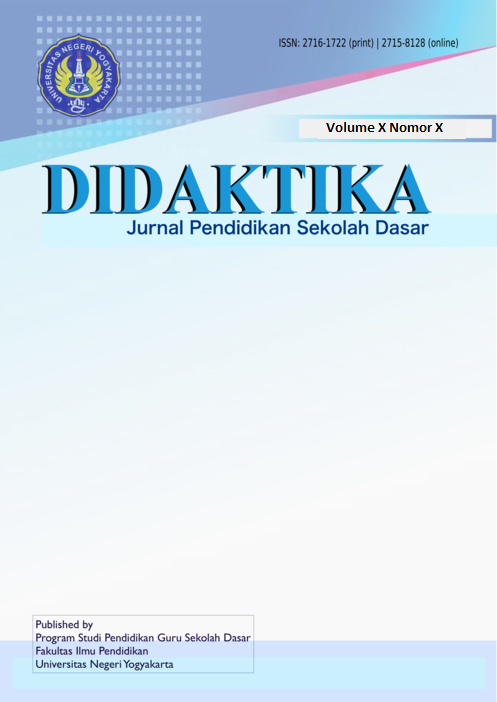Penerapan Genre-Based Approach pada Pembelajaran Bahasa Inggris Di SDN Ngaliyan 01 Semarang: Analisis Genee dalam Buku Kurikulum Merdeka pada Fase B
DOI:
https://doi.org/10.21831/didaktika.v7i2.79661Abstract
This study analyzes the implementation of the Genre-Based Approach (GBA) in teaching English to 3rd and 4th graders in Phase B of the Merdeka Curriculum at SDN Ngaliyan 01 Semarang. The research aims to identify the genres used in textbooks and evaluate their contribution to students' comprehension. A qualitative descriptive method was employed, collecting data through classroom observation and textbook analysis. The findings reveal that descriptive, narrative, and procedural genres effectively enhance students' understanding of the material. Visual media, such as images and short videos, play a significant role in simplifying abstract concepts and increasing student engagement. Engagement levels reached 85% in the 4th grade, with comprehension rates up to 80%. However, challenges such as limited teaching time and varying student abilities were addressed through interactive, visual-based strategies. This study highlights the relevance of GBA in supporting students' literacy and provides recommendations to further enhance its application with more innovative, media-supported approaches aligned with the Merdeka Curriculum.
Downloads
Published
How to Cite
Issue
Section
Citation Check
License
- Authors retain copyright and grant the journal right of first publication with the work simultaneously licensed under a Creative Commons Attribution License that allows others to share the work with an acknowledgement of the work's authorship and initial publication in this journal.
- Authors are able to enter into separate, additional contractual arrangements for the non-exclusive distribution of the journal's published version of the work (e.g., post it to an institutional repository or publish it in a book), with an acknowledgement of its initial publication in this journal.
- Authors are permitted and encouraged to post their work online (e.g., in institutional repositories or on their website) prior to and during the submission process, as it can lead to productive exchanges, as well as earlier and greater citation of published work.







